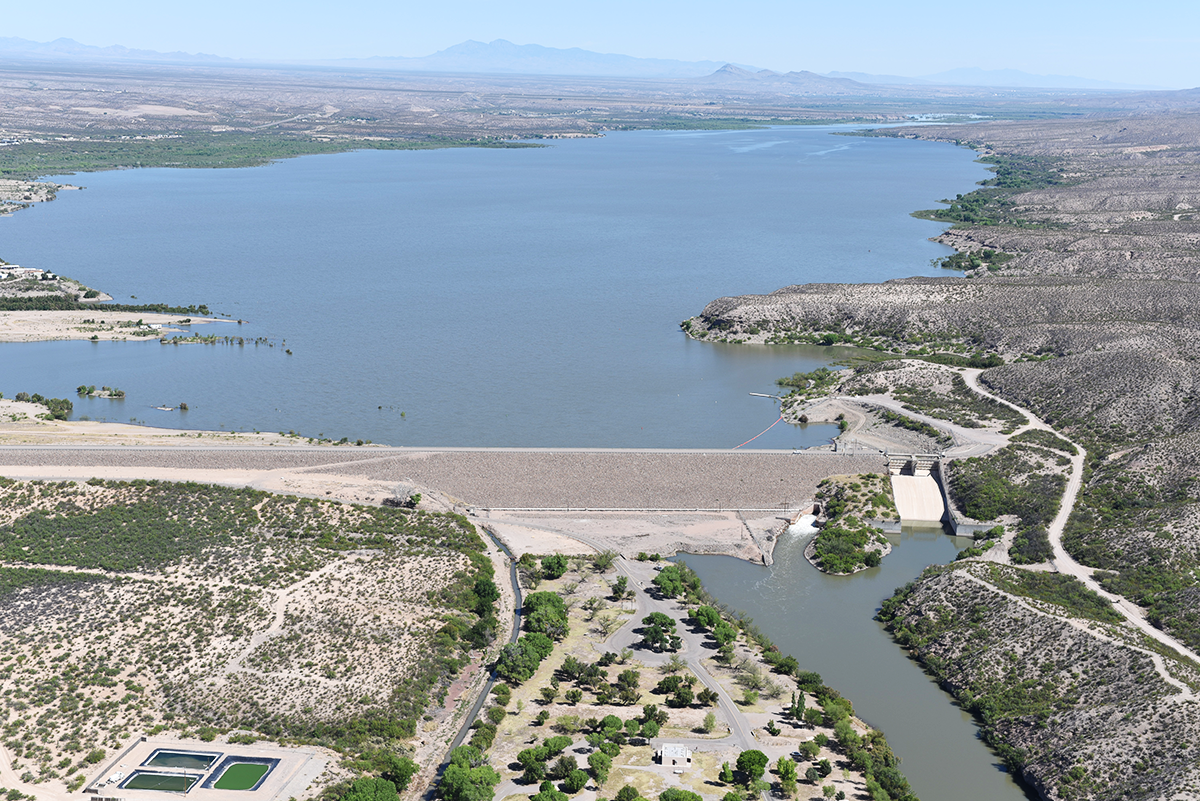 Caballo Dam will release approximately 500 cfs at 8 a.m. and then go to 2,200 cfs no later than 11 a.m. on Friday morning, March 8, 2024.
Caballo Dam will release approximately 500 cfs at 8 a.m. and then go to 2,200 cfs no later than 11 a.m. on Friday morning, March 8, 2024.
ALBUQUERQUE, N.M. - Water managers are expecting a low spring runoff this year on the Rio Grande after issuing the Natural Resources Conservation Service’s (NRCS) February streamflow forecast for El Vado Reservoir inflow for March to July, which predicts inflow at only 46% of median.
While conditions can change dramatically and it is still too early to make reliable predictions, last year, March to July inflow to El Vado was 177% of median. Elephant Butte Reservoir is now 25% full compared to about 14% at this time in 2023.
With more water in storage in Elephant Butte, irrigation releases will begin earlier than they did in 2023. Elephant Butte Dam releases began on Feb. 15, while Caballo Dam releases will begin March 8 for farmers in southern New Mexico, west Texas, and Mexico.
“While we don’t yet know what runoff will look like, we will continue to work closely with the irrigation districts, states, municipalities, Pueblos and all other stakeholders to release water for multiple purposes where possible as this megadrought continues,” said Albuquerque Area Manager Jennifer Faler. “A successful irrigation season and river and ecosystem health are important to all of us, and we use every tool in our toolbox to get the most benefit from New Mexico’s variable water supply.”
The Bureau of Reclamation and U.S. Army Corps of Engineers are working on their annual operating plans for the Rio Grande and Pecos River. These plans give stakeholders and the public an idea of what river conditions, the irrigation season, and reservoir operations may look like this year. The plans will be presented virtually and in person on April 18.
At the end of February, snow water equivalent was 90% of median for the Rio Chama Basin, 84% of median for the Upper Rio Grande Basin, 113% for the Sangre de Cristos, and 121% for the Jemez. Based on these values, the NRCS streamflow forecast issued for the month of April predicts that the Rio Chama flow into El Vado Reservoir will be at 46% of its median, with an inflow of about 86,000 acre-feet of water.
Construction is ongoing at El Vado Dam and runoff storage is not currently available there. Reclamation will bypass native flows through El Vado and plans to time the release of San Juan-Chama Project water down the Rio Chama to meet water users’ calls for water and support weekend summer rafting flows.
Important Points:
- The Middle Rio Grande Conservancy District began limited diversions with natural flow of the Rio Grande Feb. 26.
- Despite close coordination with the Middle Rio Grande Conservancy District, the lack of reservoir storage while El Vado is under construction slightly increases the chance that the Albuquerque reach of the Rio Grande could experience some drying this summer along with sections of the river in the Isleta and San Acacia reaches.
- Reclamation is coordinating with U.S. Fish and Wildlife Service to rescue fish from drying portions of the river and with working with partners to use the limited supply of water most effectively.
- The Rio Grande Project’s usable storage is currently about 522,500 acre-feet and is expected to peak at about 550,000 acre-feet before declining as irrigation releases start.
- Releases from Elephant Butte Reservoir began on Feb. 15 and releases from Caballo Reservoir will begin March 8.
- The dry riverbed below Caballo Dam will take on water quickly. As such, it will be unpredictable, potentially debris-laden, and dangerous. The public is asked to exercise caution around the river channel as water levels will fluctuate throughout the rest of the irrigation season.
- On the Pecos River, basin-wide snow water equivalent was 113% of median on Feb. 23, and the NRCS predicted 44,000 acre-feet of inflow to Santa Rosa Reservoir from March to July.
- The Carlsbad Irrigation District has allocated 1.5 feet per acre and plan to start irrigating in mid- to late-March.
The Annual Operating Plan public meetings will be held virtually and in person Thursday, April 18. The presentation will be available on Reclamation’s website at Plans | Upper Colorado Basin | Bureau of Reclamation (usbr.gov). For more information, please contact Albuquerque Area Office Public Affairs, Pacifica Casares-Chehy at pcasareschehy@usbr.gov.


